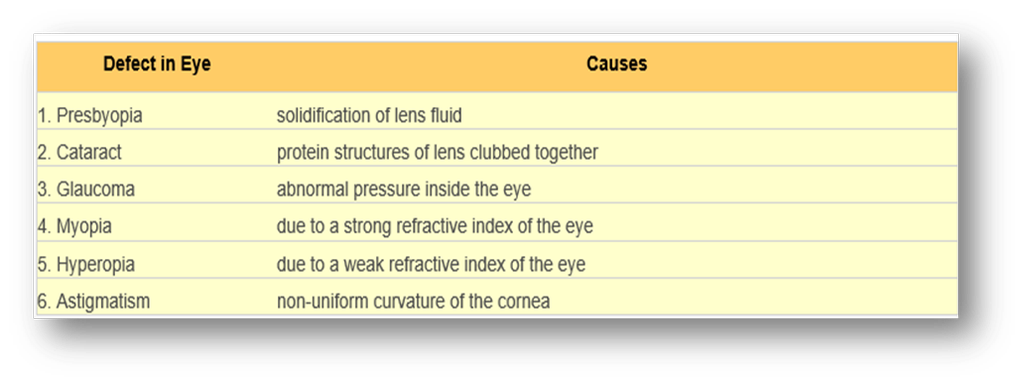- Books Name
- Class-8 Science Book
- Publication
- PathSet Publications
- Course
- CBSE Class 8
- Subject
- Science
What is inside our Eyes?
The structure and working of the Human Eye
- Eyes are sensory organs that allow us to see things present in the environment.
- The eyes absorb the light rays and form a visual image and transform this information of the image to the brain.
- The eye has a spherical structure which is called the eyeballs. The eyeballs are attached in the eye socket and various muscles are connected to them called the eye muscles. These are muscles allow the movement of the eyeballs.
- The eyes are protected with eyelids. They prevent an excess of light and dust to enter the eyes and therefore save the eyes from any outer objects.
Interactive
The Parts of the Human Eye
- Cornea - It is a transparent covering present on the outer side of the eyes. It consists of 6 layers. Tear fluid covers the cornea and protects the eye.
- Iris - It is a dark-coloured muscular structure present in the center of the cornea. The Iris consists of a small opening called Pupil through which the light enters into the eye. The Iris has colourful pigments like grey, blue, black, green, brown, etc. The amount of light that enters the eye is controlled by the Iris. In other words, Iris controls the Pupil.
- Lens - It is like a sphere of liquid present inside the eye. The eye lens is located behind the Pupil which helps in the formation of an image in the eye.
- Retina- Retina is a layer located behind the lens at the back of the eye. The eye lens focuses the light that enters the eye over the retina. The retina consists of different Nerve cells that perform different tasks. There are sensory cells that detect light. They then transform that information into an electrical impulse. These electrical impulses are sent to the brain via the optic nerve. Two types of vision cells in the retina are:
- Rods or chopsticks - They get activated in darkness or dim light and the responsible for light-dark vision.
- Cones - they react to bright light and therefore sense colour in an object.
- Vitreous Chamber - The inner space of the eyeball called the transparent vitreous chamber consists of a gel-like substance. This substance maintains the right pressure in the eye and maintains the stability of the eyeball.
- Blindspot - There is a point in the eye located at the junction of the retina and the optic nerve where no sensory cells are present. This spot is therefore called the blind spot as it does not support any vision.
Persistence of image on the retina
- The image that is formed on the retina persists for 1/16th of a second.
- Therefore, if one tries to move 16 still images per second of a moving object in front of our eye it appears as if the object is moving. This is how animation films and movies work. They are a collection of separate pictures which are moved in a sequence.
- However, this movement is so fast, around 24 pictures in a second, that it appears as if they are moving.
The vision may decrease with age
- Normally a person can see distant and nearby objects through the eyes.
- A person with normal eyes can read most comfortably at a distance of 25cm. However, this distance can decrease with age.
- Also sometimes people can see far objects clearly but not the objects that are nearby (farsightedness or hyperopia).
- Similarly, some people can see the nearby objects clearly but not the far objects (nearsightedness or myopia). Hence they use suitable lenses to correct such defects.
- Sometimes with old age, the lens of the eye can become cloudy or foggy. This condition is called cataract with results in loss of vision.
- However, this defect can be rectified by removing the old lens from the eye and inserting an artificial lens at that place.
VISION DEFECTS
some of the defects are -
- Myopia: A person with myopia can see near objects clearly while distant objects appear blurred. This disease is also called short-sightedness or near-sightedness. Spectacles with concave lenses can improve the vision of a myopic person.
- Hypermetropia: A person with Hypermetropia can see distant objects clearly but cannot see nearby objects distinctly. This disease is also called long-sightedness. Spectacles with convex lenses can improve the vision in a hypermetropic person.
- Cataract: During old age, the crystalline lens becomes milky and cloudy in a cataract patient and thus the person cannot see clearly. A cataract is treated by surgery. In cataract surgery, the cloudy lens is removed and an artificial lens is transplanted in the eye.


 PathSet Publications
PathSet Publications
